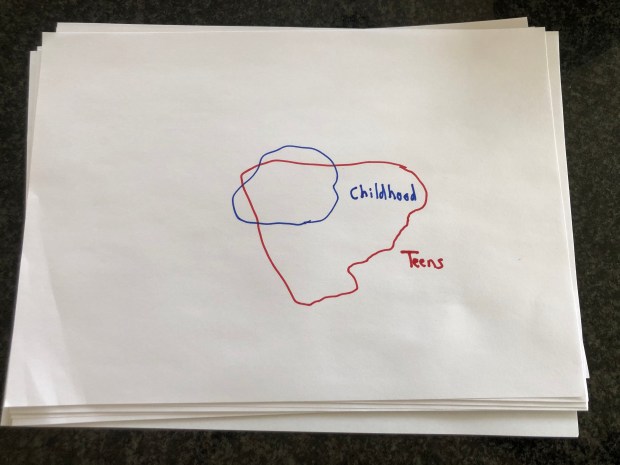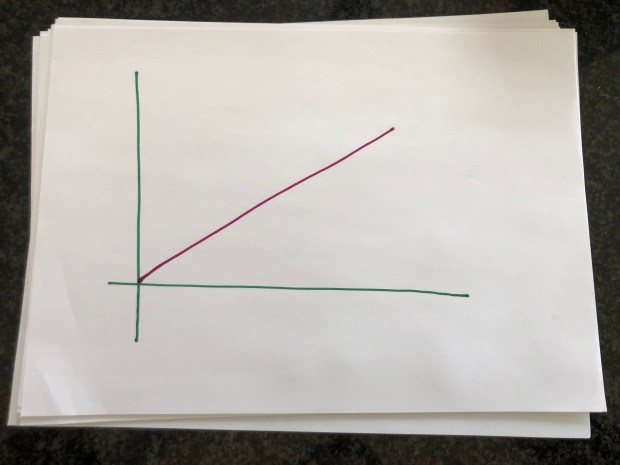Last month, I spoke with Travis Egedy, who makes electronic dance music as Pictureplane. His most famous track is “Goth Star”, a 2009 cut built from a Fleetwood Mac song, “Seven Wonders”, which he broke down and stripped for parts.
“Goth Star” is all but unique in the Pictureplane repertoire: Egedy doesn’t play any instrument or sing, but chops and layers the 1980s track until it’s all but unrecognisable. (The video depicts a séance whose participants are visited by the ghost of Stevie Nicks, her vocals transformed into yelps and word-fragments that taunt us with the possibility of deciphering them). Every single element of the song comes from Fleetwood Mac’s original.
“Goth Star” has its own origins in Egedy’s Santa Fe high school years, when, as an aspiring hip-hop musician, he’d raid the CD collections of his friends’ parents for anything that might yield a good beat.
His teenage experiments sampling “Seven Wonders” didn’t lead to immediate results, but he returned to the track years later, when he was living and making music in now-defunct Denver artspace Rhinoceropolis.
In the intervening years, Egedy had become an art student, focussed on painting. (The name Pictureplane, drawn from the index of an art textbook, refers to “the transparent division between the fictive internal space [of a painting] and the real space outside, in which the viewer is placed.”)
Just as Egedy’s visual art was created from layers of paint on a canvas, his music too was born in layers: beats, riffs, loops, effects.
Rhinoceropolis and the Denver warehouse scene offered a place for experimentation and growth. New psychedelic elements built up in his work, and these cosmic concerns fed the 2009 album, Dark Rift, on which “Goth Star” appears.
The Dark or Great Rift which lends its name to the album is another kind of layer, a band of material across the centre of our galaxy which blocks certain stars from sight. In 1919, the astronomer E.E. Barnard, debating whether the rift was an absence of stars or a dust cloud impeding our view, phrased it quite poetically: “I did not at first believe in these dark obscuring masses. The proof is not conclusive.”
When Egedy revisited the Fleetwood Mac tracks he’d been playing with in high school, using the same primitive software his teenaged self had picked up from Best Buy, he found something that hadn’t been accessible before. Layers of technique and experience combined to create his biggest hit to date. “Goth Star” is eerie and compelling, taunting us with familiarity even as it makes something entirely fresh from the ghostly echoes of MOR giants.
When the band HEALTH came through Denver on tour, they loved what Pictureplane was doing so much that they signed Egedy to their record label. They subsequently performed their own cover of “Goth Star”. Layers of meaning built up, as a track entirely composed from samples took on new life in another artist’s version.
This layering, the way that our choices, experiences, and encounters build up over time, got me thinking about how we represent change.
A colleague was doodling lines on a piece of paper, like trajectories, depicting change over time – not strict graphs, but impressionistic sketches.
Sometimes change feels like a straight line, moving steadily from one state to another. Sometimes there are loops and whirls, setbacks and deviations. Sometimes things change exponentially and the curve rockets away from us. Sometimes we reach a plateau and despite our greatest efforts, change comes slow.
Different ways of drawing offer us different insights. Lines like those my colleague drew can be incredibly useful tools for reflecting on how things are changing over time.
But looking at those doodles, and thinking about the layers of Pictureplane’s work, made me wonder what it would be like to depict change in a different dimension.
Imagine one moment in your life as an island. You could draw a shape that encompasses everything you were at a given time – say, in your childhood: everything you did, everything you felt, everything you knew, or everything you wanted.

Time passed and you changed. Perhaps you learned new things and forgot others. Perhaps what you wanted or what mattered to you shifted. Perhaps friends, family, and colleagues who shared your island came and went. But some elements of the territory remained the same. You could draw a fresh island to represent this and superimpose it on top of the first.

More time passed, and more changes occurred. New islands can be added to show this – each one another layer in the history of your existence. There was a time when, as a geeky kid, I knew everything there was to know about the TV show Doctor Who; there was a time when my closest friends were the people I went to school with. There was a time, as a doctoral student, when I was absurdly well-informed about certain periods of Viennese history. Some of that knowledge stays, but other parts of that island have been reclaimed by the sea. Perhaps they could be dredged up again at some future date, but right now they’re inaccessible to me without some serious scuba-diving.

We can draw moments of our life as expansive territories, layered maps of who we are, who we were, and even who we will be. Try sketching a map of the person you want to be, the relationships you seek to form or sustain, the knowledge or qualities you wish to acquire, the experiences you wish to have. Think also of the territories you might wish to surrender. Note where you have grown and the places from which you have receded; note where the islands of past, present, and future have common ground – and where territory might fall back into the sea.

We only have so much time, energy, appetite, and resource in our lives – so the island is always finite and bounded. But the shoreline can be moved, building up some parts, letting others wash away. When I worked with asylum-seeking kids in the UK, a psychologist who was training us said that although we might be daunted by the challenge, we shouldn’t worry, because “there is always room for us to grow”.
Think of some aspect of your life that you’d wish to map in this way: relationships, interests, knowledge, habits. Look at who you’ve been, what you’ve known, what you’ve done. The islands build up, an aesthetic representation of the passage of time: your life as an artwork, grown layer by layer, seen through the pictureplane.


One thought on “Islands of Memory: Layers, Growth, and Future Paths”